National Symbols
National Symbols
India has many national symbols with which it identifies itself and takes pride in them. These symbols have been chosen from India’s unique flora and fauna, and its culture and civilisation. In a nutshell, these symbols say a lot about India. These symbols are intrinsic to the Indian identity and heritage. Indians of all demographics backgrounds across the world are proud of these National Symbols as they instill a sense of pride and patriotism in every Indian's heart.
National Flag
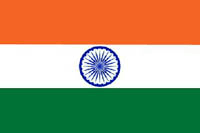 The National Flag is a horizontal tricolour of deep saffron (kesaria) at the top, white in the middle and dark green at the bottom in equal proportions. The ratio of width of the flag to its length is two to three. In the centre of the white band is a navy-blue wheel which represents the chakra. Its design is that of the wheel which appears on the abacus of the Sarnath Lion Capital of Ashoka. Its diameter approximates to the width of the white band and it has 24 spokes. The design of the National Flag was adopted by the Constituent Assembly of India on 22 July 1947.
The National Flag is a horizontal tricolour of deep saffron (kesaria) at the top, white in the middle and dark green at the bottom in equal proportions. The ratio of width of the flag to its length is two to three. In the centre of the white band is a navy-blue wheel which represents the chakra. Its design is that of the wheel which appears on the abacus of the Sarnath Lion Capital of Ashoka. Its diameter approximates to the width of the white band and it has 24 spokes. The design of the National Flag was adopted by the Constituent Assembly of India on 22 July 1947.
Apart from non-statutory instructions issued by the Government from time to time, display of the National Flag is governed by the provisions of the Emblems and Names (Prevention of Improper Use) Act, 1950 (No. 12 of 1950) and the Prevention of Insults to National Honour Act, 1971 (No. 69 of 1971). The Flag Code of India, 2002, is an attempt to bring together all such laws, conventions, practices and instructions for the guidance and benefit of all concerned.
The Flag Code of India, 2002, came into effect from 26 January 2002 and superseded the ‘Flag Code-India’ as it existed. As per the provisions of the Flag Code of India, 2002, there are no restriction on the display of the National Flag by members of general public, private organisations, educational institutions, etc. except to the extent provided in the Emblems and Names (Prevention of Improper Use) Act, 1950, the Prevention of Insults to National Honour Act, 1971, and any other law enacted on the subject.
To know more about the Flag Code of India, click here
National Bird
 The National Bird of India—the Indian peacock, Pavo cristatus, is a colourful, swan-sized bird with a fan-shaped crest of feathers, a white patch under the eye and a long, slender neck. The male of the species is more colourful than the female with a glistening blue breast and neck and a spectacular bronze-green tail of around 200 elongated feathers. The female is brownish, slightly smaller than the male and lacks the tail.
The National Bird of India—the Indian peacock, Pavo cristatus, is a colourful, swan-sized bird with a fan-shaped crest of feathers, a white patch under the eye and a long, slender neck. The male of the species is more colourful than the female with a glistening blue breast and neck and a spectacular bronze-green tail of around 200 elongated feathers. The female is brownish, slightly smaller than the male and lacks the tail.
The elaborate courtship dance of the male, fanning out the tail and preening its feathers is a gorgeous sight.
National Flower
Lotus, Nelumbo Nucifera Gaertn is the National Flower of India. It is a sacred flower and occupies a unique position in the art and mythology of ancient India and has been an auspicious symbol of Indian culture since time immemorial.
India is rich in flora. The currently available data place India in the tenth position in the world and fourth in Asia in plant diversity.
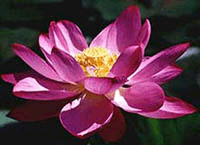
From about 70 per cent geographical area surveyed so far, 47,000 species of plants have been described by the Botanical Survey of India (BSI).
National Tree
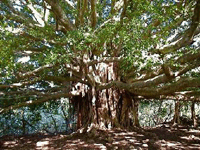
Indian fig tree, Ficus bengalensis, is the National Tree of India, whose branches root themselves like new trees over a large area. The roots then give rise to more trunks and branches.
Due to this characteristic and its longevity, this tree is considered immortal and is an integral part of the myths and legends of India.
Even today, the banyan tree is the focal point of village life and the village council meets under the shade of this tree.
National Anthem
The National Anthem of India is played or sung on various occasions. Instructions have been issued from time to time about the correct versions of the Anthem, the occasions on which these are to be played or sung, and about the need for paying respect to the Anthem by observance of proper decorum on such occasions. The substance of these instructions has been embodied in this information sheet for general information and guidance.
The National Anthem — Full and Short Versions
The composition consisting of the words and music of the first stanza of the late poet Rabindranath Tagore’s song known as ‘Jana Gana Mana’ is the National Anthem of India. It reads as follows:
Jana-gana-mana-adhinayaka, jaya he
Bharata-bhagya-vidhata.
Punjab-Sindh-Gujarat-Maratha
Dravida-Utkala-Banga
Vindhya-Himachala-Yamuna-Ganga
Uchchala-Jaladhi-taranga.
Tava shubha name jage,
Tava shubha asisa mange,
Gahe tava jaya gatha,
Jana-gana-mangala-dayaka jaya he
Bharata-bhagya-vidhata.
Jaya he, jaya he, jaya he,
Jaya jaya jaya, jaya he!
The above is the full version of the Anthem and its playing time is approximately 52 seconds. A short version consisting of the first and last lines of the National Anthem is also played on certain occasions. It reads as follows:
Jana-gana-mana-adhinayaka, jaya he
Bharata-bhagya-vidhata.
Jaya he, jaya he, jaya he,
Jaya jaya jaya, jaya he!
Playing time of the short version is about 20 seconds.
National River
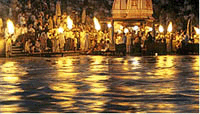
The Ganga or Ganges is the longest river of India, flowing over 2,510 km of mountains, valleys and plains. It originates, as the Bhagirathi River, in the snowfields of the Gangotri Glacier in the Himalayas. It is later joined by other rivers such as the Alaknanda, Yamuna, Son, Gumti, Kosi and Ghagra. The Ganga river basin is one of the most fertile and densely populated areas of the world and covers an area of 1,000,000 sq km. There are two dams on the river—one at Haridwar and the other at Farakka. The Ganges River Dolphin is an endangered animal that specifically habitats this river.
The Ganga is revered by Hindus as the most sacred river on earth. Key religious ceremonies are held on the banks of the river at cities such as Varanasi, Haridwar and Allahabad. The Ganga widens out into the Ganges Delta in the Sunderban’s swamp of Bangladesh, before it ends its journey by emptying into the Bay of Bengal.
State Emblem
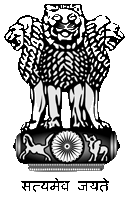
The State emblem is an adaptation from the Sarnath Lion Capital of Ashoka. In the original pillar, there are four lions, standing back to back, mounted on an abacus with a frieze carrying sculptures in high relief of an elephant, a galloping horse, a bull and a lion separated by intervening wheels over a bell-shaped lotus. Carved out of a single block of polished sandstone, the Capital is crowned by the Wheel of the Law (Dharma Chakra).
In the state emblem, adopted by the Government of India on 26 January 1950, only three lions are visible, the fourth being hidden from view. The wheel appears in relief in the centre of the abacus with a bull on right and a horse on left and the outlines of other wheels on extreme right and left. The bell-shaped lotus has been omitted. The words Satyameva Jayate from Mundaka Upanishad, meaning 'Truth Alone Triumphs', are inscribed below the abacus in Devanagari script.
National Calendar
The National Calendar based on the Saka Era with Chaitra as its first month and a normal year of 365 days was adopted from 22 March 1957 along with the Gregorian calendar for the following official purposes:
- Gazette of India,
- News broadcast by All India Radio,
- Calendars issued by the Government of India and
- Government communications addressed to the members of the public.
Dates of the National Calendar have a permanent correspondence with dates of the Gregorian calendar, 1 Chaitra falling on 22 March normally and on 21 March in leap year.
National Animal
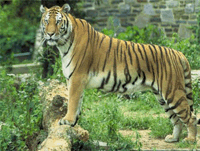
The magnificent tiger, Panthera tigris, is a striped animal. It has a thick yellow coat of fur with dark stripes.
The combination of grace, strength, agility and enormous power has earned the tiger its pride of place as the National Animal of India.
Out of the eight known races of the species, the Indian race—the Royal Bengal Tiger, is found throughout the country except in the north-western region and also in the neighbouring countries—Nepal, Bhutan and Bangladesh.
To check the dwindling population of tigers in India, ‘Project Tiger' was launched in April 1973. So far, 27 tiger reserves have been established in the country under this project, covering an area of 37,761 sq km.
National Song
The song Vande Mataram, composed in Sanskrit by Bankimchandra Chatterjee, was a source of inspiration to the people in their struggle for freedom. It has an equal status with Jana-gana-mana. The first political occasion when it was sung was the 1896 session of the Indian National Congress. The following is the text of its first stanza:
Vande Mataram!
Sujalam, suphalam, malayaja shitalam,
Shasyashyamalam, Mataram!
Vande Mataram!
Shubhrajyotsna pulakitayaminim,
Phullakusumita drumadala shobhinim,
Suhasinim sumadhura bhashinim,
Sukhadam varadam, Mataram!
Vande Mataram, Vande Mataram!
The English translation of the stanza rendered by Sri Aurobindo, in prose, is:
I bow to thee, Mother,
richly-watered, richly-fruited,
cool with the winds of the south,
dark with the crops of the harvests,
The Mother!
Her nights rejoicing in the glory of the moonlight,
her lands clothed beautifully with her trees in flowering bloom,
sweet of laughter, sweet of speech,
The Mother, giver of boons, giver of bliss.
National Fruit
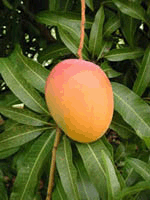
A fleshy fruit, eaten ripe or used green for pickles, etc., of the tree Mangifera indica —the mango is one of the most important and widely cultivated fruits of the tropical world.
Its juicy fruit is a rich source of Vitamins A, C and D. In India, there are over 100 varieties of mangoes, in different sizes, shapes and colours. Mangoes have been cultivated in India from time immemorial.
The poet Kalidasa sang its praises. Alexander savoured its taste, as did the Chinese pilgrim Hieun Tsang. Mughal emperor Akbar planted 100,000 mango trees in Darbhanga, Bihar, at a place now known as Lakhi Bagh.
National Game

India has conquered the podium when it comes to the game of hockey. Our nation has an excellent record with eight Olympic gold medals. Indian hockey’s golden period was from 1928–1956, when the Indian hockey team won six successive Olympic gold medals. Team also won the 1975 World Cup besides two more medals (silver and a bronze). The Indian Hockey Federation gained global affiliation in 1927 and joined the International Hockey Federation.
Thus began the history of Indian Hockey Federation as India entered the Olympics to begin its golden saga. The tour was a huge success with India winning 18 out of the 21 matches and the legendary Dhyan Chand was the cynosure of all the eyes scoring over 100 goals of the 192 Indian accounted for. The match began in Amsterdam in 1928 and India went on a winning spree in Los Angeles in 1932 and Berlin in 1936 and, thus, bagged a hat-trick of gold medals at the Olympics.
Post-Indian Independence, the Indian team achieved another hat-trick of gold medals at the 1948 London Olympics, 1952, Helsinki Games and the Melbourne Olympics.
During the Golden Era, India played 24 Olympic matches, won all 24, scored 178 goals (at an average of 7.43 goals per match) and conceded only 7 goals. The two other gold medals for India came in the 1964 Tokyo Olympics and the 1980 Moscow Olympics.
Currency Symbol
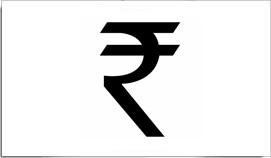 The symbol of Indian Rupee typifies India's international identity for money transactions and economic strength. The Indian Rupee sign is an allegory of Indian ethos. The symbol is an amalgam of Devanagari "Ra" and the Roman Capital "R" with two parallel horizontal stripes running at the top representing the national flag and also the "equal to" sign. The Indian Rupee sign was adopted by the Government of India on 15th July, 2010.
The symbol of Indian Rupee typifies India's international identity for money transactions and economic strength. The Indian Rupee sign is an allegory of Indian ethos. The symbol is an amalgam of Devanagari "Ra" and the Roman Capital "R" with two parallel horizontal stripes running at the top representing the national flag and also the "equal to" sign. The Indian Rupee sign was adopted by the Government of India on 15th July, 2010.The symbol of Indian Rupee typifies India's international identity for money transactions and economic strength. The Indian Rupee sign is an allegory of Indian ethos. The symbol is an amalgam of Devanagari "Ra" and the Roman Capital "R" with two parallel horizontal stripes running at the top representing the national flag and also the "equal to" sign. The Indian Rupee sign was adopted by the Government of India on 15th July, 2010.
The symbol, conceptualised and designed by Udaya Kumar, a post graduate in Design from Indian Institute of Technology Bombay, has been chosen from thousands of concept entries received by the Ministry of Finance through an open competition among resident Indian nationals. The process of establishing and implementing this new identity is underway through various digital technology and computer applications.
Source: Know India portal
Related Resources
Last Modified : 7/3/2023
Various abuse and threats that children face today...
The topic covers about various policies related to...
This topic provides links to various important re...
History offers a lot of information about how peop...
